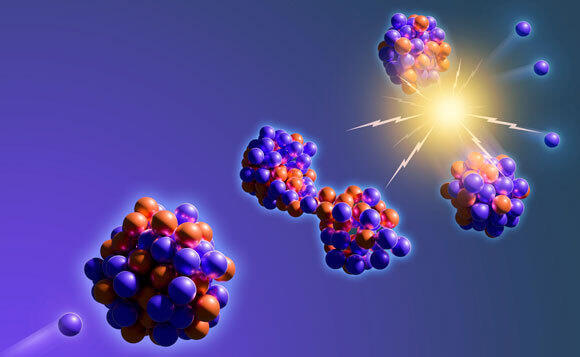Much like many other scientific concepts, the word "energy" permeates our lives and discourse in various ways and contexts. When we experience fatigue, we may lament a lack of energy, while healers often refer to providing an "energetic touch" or tapping into "cosmic energy," among other common-language expressions of this concept. However, in the realm of science, energy is not synonymous with vitality or a mystical supernatural phenomenon.
Instead, it serves as a fundamental physical quantity that enables us to describe the behavior of phenomena across multiple disciplines and fields — from Newtonian mechanics and astronomy to relativity, quantum mechanics, chemistry, and biology.
So, what exactly is energy? The challenge lies in its definition. Although we have a basic intuition regarding the essence of this fundamental quantity, it’s hard to define it accurately. The challenge arises because energy manifests in numerous forms, yet the essence of energy transcends these manifestations.
Physicists have addressed this by defining energy not through intuitive, conceptual means, but rather by its fundamental properties—a purely mathematical concept. Energy, then, is defined as a quantity that remains conserved within closed systems. The significance of this statement will soon become apparent.
4 View gallery


Energy is an important physical quantity that assumes diverse forms and can be converted into motion. Harnessing solar energy from the sun’s heat
(Photo: ssuaphotos, Shutterstock)
Many Shades of Energy
Energy can take on many forms. One of the most important is kinetic energy—the energy of motion. When a physical body moves at a certain speed, signifying that the body possesses kinetic energy proportional to that velocity. Kinetic energy increases with the increase in speed, and the mass of the moving object. Heat is also a form of kinetic energy— when we feel warmth, what we’re feeling is the disorganized movement of air particles or the particles of the object that's heating up. Even sound is in part kinetic energy, as sound waves are vibrations of air particles or any other medium the sound travels through.
Another form of energy that a body can take on arises from its elevation above the ground. On Earth, the greater the distance a body is situated above the planet’s center, the more potential energy it has. This potential energy (energy of height) also depends upon mass and increases as the mass of the body increases. It also depends on the gravitational force exerted by the Earth.
These two forms of energy are very different from one other. What is the relationship between the location of a body in a high place and the motion of a body, sound or heat, and how can they all represent the same thing? The relationship relates to the fact that one type can be converted into another. For instance, by placing a ball atop a tall building (stage 1), its potential energy due to its height converts into kinetic energy as it descends (stage 2), with a portion transforming into sound upon impact with the ground (stage 3), and another portion regaining speed as it rebounds (stage 4), ultimately regaining its initial elevation (stage 5).
4 View gallery


Converting forms of energy through five stages, as a ball falls from the roof of a building, hits the ground, and bounces back up
(Illustration: Noa Feldman)
Energy as Potential
Instead of defining energy according to all the forms it can assume, it can be defined according to its behavior. Energy is that which changes form and transfers from one object to another, and can, in the right form, manifest as motion. All forms of energy, other than kinetic energy, are collectively referred to as potential energy—because they represent something that has the potential, under the right conditions, to transform into motion, in other words, kinetic energy.
Potential energy can appear in various, diverse forms: for example, a compressed spring holds energy, as do materials or cells that can be burned to convert into heat, electric energy, or light energy, among others. Essentially, anything that can be converted into motion (kinetic energy) or into another recognizable form of energy, such as height or heat, constitutes a form of energy.
An important property of energy is that it is conserved. Energy never disappears from the universe, it simply changes form. If the system is closed, that is, it does not interact with the outside world, then the energy inside it will neither leave nor increase.
Returning for a moment to the example of the ball, let’s assume that the system consists only of the ball and the air. The ball’s potential energy due to its height is converted into kinetic energy (energy of motion) as it descends, with a fraction converting into sound, that is - a wave propagated through the air - yet the total amount of energy remains unaltered. This property of energy is known as the law of conservation of energy.
The law of conservation of energy is important because it helps us understand the world and predict how physical systems will behave. We know that if a certain closed system possesses some amount of energy at the beginning of an experiment, it will retain the same amount of energy throughout all stages. This property can aid us in understanding the behavior of the system during the experiment. Take for example the marble moving along the following hilly track:
4 View gallery


Energy changes form along the track. If we know how much energy the marble has, we can calculate its speed at any point along the track
(Illustration: Noa Feldman)
The amount of energy throughout the movement along the entire track is roughly equal. A small portion of it is transferred to heating the air, as well as heating the marble itself and the track due to friction of the marble with both the track and the air, but this amount is typically negligible, and thus we can usually ignore it. Therefore we know exactly how much energy the marble has at every point and we can determine its speed at any given point.
Energy is conserved even when we move on to discuss more complex physical theories. As the theory becomes more complex, energy may be expressed in increasingly strange forms. For example, in Albert Einstein’s theory of relativity, which deals, among other things, with very fast particles such as light or radiation, as well as with very heavy bodies such as galaxies, we find that mass itself represents a form of energy in and of itself, even in the absence of motion. This relationship is also reflected in Einstein’s famous equation, E=mc2, which essentially expresses the relationship between energy (E) and mass (m).
4 View gallery


Even the nucleus of an atom stores considerable energy, which is released when the nucleus disintegrates. Nuclear fission
(Illustration: MARK GARLICK / SCIENCE PHOTO LIBRARY)
Nuclear physics has revealed that the bonds between the particles making up an atom contain energy, termed nuclear energy. Chemistry reveals that the bonds between atoms that make up the molecules of substances contain electromagnetic energy. Many studies today focus on finding sources of energy known as renewable energy, that is, energy originating from natural, ongoing processes that do not deplete when we convert the stored energy into a form that we can utilize, such as solar energy.
Defining energy is somewhat challenging due to the many forms it assumes. Yet, by observing our surroundings, we can discern many of its forms and manifestations. Understanding energy and the law of conservation of energy helps us understand the dynamics of the world around us, and it is an important tool in the study of various physical, chemical, and biological systems.

